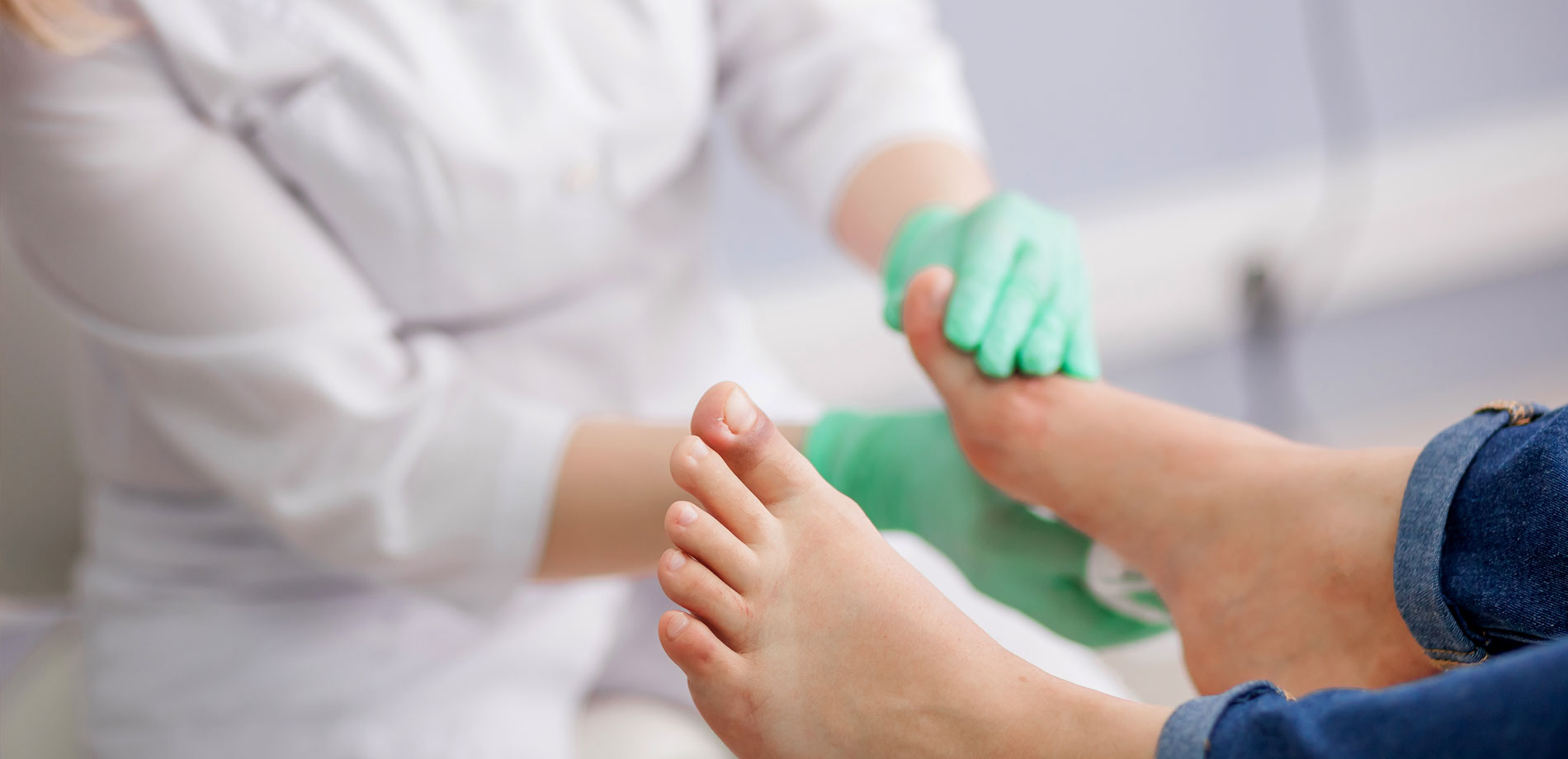Contributed by April Nelson, DPM – Department of Podiatry
Over 37 million people in the U.S. have some type of diabetes, according to the Diabetes Research Institute Foundation. Diabetes is a serious condition that needs monitoring, especially when it comes to your feet. If you have diabetes, pay close attention to open sores or wounds that develop on your feet.
What is diabetes?
Diabetes is a chronic health condition that affects how your body uses insulin. Type 1 diabetes causes the body to attack itself and therefore stops the body from making insulin, while type 2 diabetes doesn’t let your body use insulin well and can’t keep blood sugar at normal levels.
Diabetes and Feet
Diabetes can impact your feet in several ways:
- Nerve pain results in a lack of sensation or feeling in the feet. Foot ulcers develop because you cannot feel pain if you step on something or have an injury to your foot.
- Lack of blood flow to the feet causes wounds to take longer to heal than someone without diabetes.
- Diabetes can also cause extremely dry feet due to nerve pain and can increase fungal infections like fungal toenails.
Warning Signs of a Diabetic Foot Ulcer
Be aware of the following warning signs:
- A cut or scrape that hasn’t healed within a week
- Any feeling of numbness, tingling or burning in the feet
- Not being able to feel your feet
- Elevated blood sugars over a long period of time
- Any wound that drains and feels red, hot and/or swollen and hasn’t improved within a week
Why see a doctor?
If you have diabetes, you might not notice ulcers on your feet because you don’t feel any pain or discomfort. If you do notice something, your body might have trouble healing due to the lack of blood flow, which can lead to an infection. If you wait too long, the infection can make its way down to the bone, resulting in an amputation. More than 80% of diabetic amputations begin with foot ulcers, according to USA Vascular Centers.
“Many people don’t know the warning signs and think they can put peroxide on their ulcers, thinking it will make them go away,” said Dr. April Nelson, DPM, Podiatrist at MetroHealth.
According to the CDC, Black adults with diabetes are 30% more likely than White adults to have a lower leg amputation and 65% more likely than Hispanic or Latino adults with diabetes. The CDC also states that about 73,000 amputations of the lower limb (not related to trauma) are performed on people with diabetes in the United States.
“We recommend that you try to get a yearly physical done in order to catch these ulcers early, whether you are diabetic or not,” says Dr. Nelson. “The earlier these issues are addressed the more we can help you manage your symptoms.”
If you have diabetes, we recommend that you make an appointment as soon as you notice a cut or scrape on your foot.
Don’t wait past the one-week mark to see a podiatrist or your primary care provider.
To schedule an appointment with a MetroHealth podiatrist near you, call 216-778-2457 or visit metrohealth.org/podiatry and use our online chat to schedule.
















